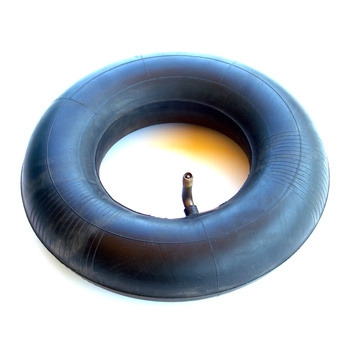
An inner tube, located inside the wall of the tire and around the rim, contains pressurized air, delivered through a valve, to keep a tire properly inflated. Inner tubes have been used in conjunction with tires since the early 1900s. Although their use in modern passenger cars has declined, the KR-16 inner tube stands as an exception. Made from durable butyl rubber, the KR-16 has a standard stem size.
Used in passenger vehicles, the KR-16 fits standard, 16-inch radial and bias tires, including P205/55R16 through 65R16, P215/50R16 through 65R16, P225/55R16 through 60R16 and P235/55R16 through 60R16. In those model numbers, the letter "P" indicates that the tire fits passenger vehicles, which includes cars, SUVs, minivans and light trucks.
The number after the "P" indicates, in millimeters, the section width -- from the widest point of the outer sidewall to the widest point of the inner sidewall. The first number after the slash represents the sidewall aspect ratio, also known as its profile: The higher the number, the taller the sidewall. For example, "65" indicates that the tire's sidewall height equals 65 percent of the section width. The "R" shown after the sidewall aspect ratio means the tire has a radial construction; a "D" would mean a bias tire. The last number of the tire size represents the diameter in inches; in this case, a 16-inch tire to match the KR-16.
KR-16 inner tubes come with TR-13 size stems -- rubber-covered straight valves designed for use with passenger vehicles, trucks, farm machinery and industrial tubes -- that fit rim holes 11.3 to 11.7mm in diameter. They can be modified with a grommet or bushing to fit 15.7 to 16mm holes. Sixty pounds per square inch rates as the maximum air pressure for the TR-13 stem, reports the Rubber Global Supplies website, with an effective length of 35mm.
Commercialized in 1943, impermeable, flexible butyl rubber largely replaced natural rubber in the manufacturing of inner tubes. Halogenation allows the chemical bonding of other materials -- like natural rubber, fillers and stabilizers -- to the rubber molecules, to produce a stronger, more durable material. Manufacturing inner tubes utilizes different grades of butyl rubber, including halobutyl, to achieve better shock absorption, pressure retention, and resistance to heat and cold.